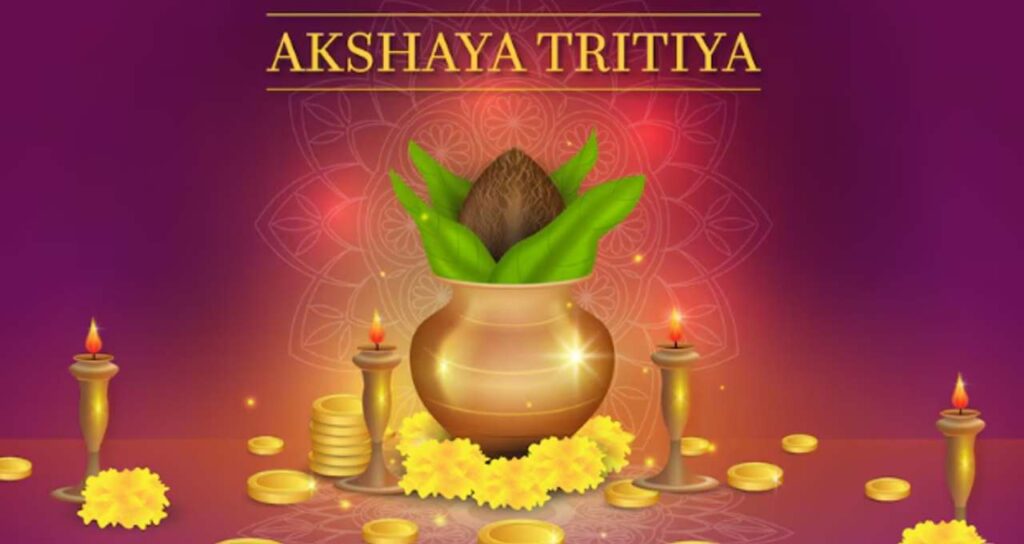Discover the significance of Akshaya Tritiya 2024! Explore auspicious puja times, shubh muhurat for shopping, and insightful tips for a blessed celebration.

Akshaya Tritiya, also known as Akha Teej, is an important Hindu festival celebrated every year. This auspicious day falls on the third lunar day of the bright half (Shukla Paksha) in the month of Vaisakha. In 2024, Akshaya Tritiya is observed on May 10th.
The Significance of Akshaya Tritiya
Wealth and Prosperity: The word “Akshaya” means eternal or imperishable. It is believed that any good deed performed on this day brings unending prosperity. People buy gold, silver, and other valuable items, considering them as investments that will never diminish.
New Beginnings: Akshaya Tritiya is considered an auspicious time to start new ventures, business endeavors, or construction projects. Many people perform puja (ritual worship) at home or visit temples to seek blessings for success.
Marriage and Relationships: Couples often choose Akshaya Tritiya for weddings or engagements. The belief is that marriages solemnized on this day will be blessed with longevity and happiness.
Rituals and Traditions
Buying Gold: Gold jewelry shops witness a surge in customers on Akshaya Tritiya. Purchasing gold is believed to bring wealth and good fortune. People also invest in silver coins or utensils.
Charity and Donations: Giving to the less fortunate is an essential part of this festival. Donating food, clothes, or money to the needy is considered virtuous.
Puja and Mantras: Devotees wake up early, take a ritual bath, and offer prayers to Lord Vishnu, Goddess Lakshmi, and Lord Kubera. Chanting mantras and performing aarti (ceremonial worship) is common.
Akshaya Tritiya in Different Regions
North India: In states like Uttar Pradesh, Rajasthan, and Punjab, people visit temples and perform special pujas. Kheer (sweet rice pudding) is prepared as an offering.
South India: In Karnataka and Tamil Nadu, women draw intricate rangoli designs at the entrance of their homes. They also prepare neem leaves and jaggery as a traditional dish.
Eastern India: In West Bengal and Odisha, people celebrate this day with fervor. They participate in community feasts and cultural events.